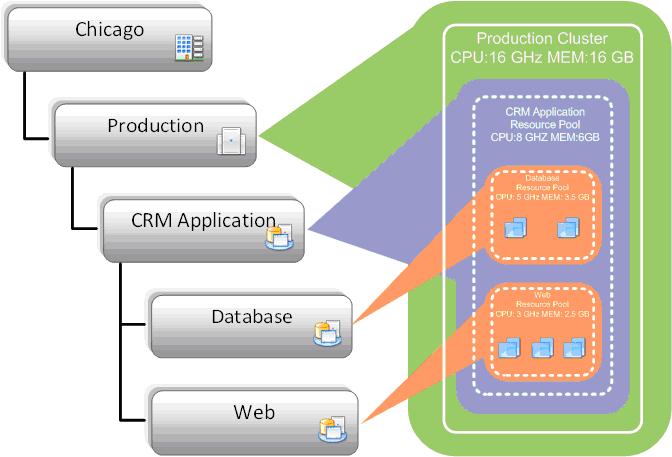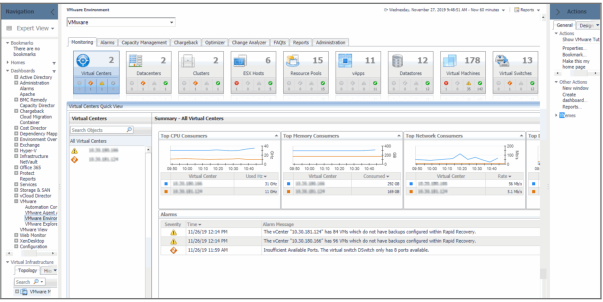Virtual objects
The management of datastores is carried out at the both the datacenter and the ESX Server levels.
Your VMware environment uses virtual switches to distribute network traffic. A stand-alone ESX host typically uses a standard virtual switch to manage network traffic to and from virtual machines running on that host. Distributed virtual switches manage configuration of proxy switches, enabling communication between a virtual machine using the distributed switch and any of these components:
In addition to standard and distributed virtual switches, your monitored environment may also include one or more Cisco virtual switches. A Cisco virtual switch is a third-party distributed virtual switch that manages network traffic between virtual machines and other components in your integrated virtual infrastructure. For more information about virtual switches, see your VMware documentation.
Navigation basics
This describes the basic Foglight® for VMware navigation techniques necessary for using Foglight for VMware.
For information about navigation in the browser interface, see Interacting with Foglight for VMware .
Foglight for VMware browser interface elements
Depending on your user roles, you may see either the contents of the first bookmark (the Welcome page is the default) listed under Bookmarks, or a home page. For further details, see the Foglight User Guide.
Navigation panel
If you do not see any dashboards in the navigation panel, the user id with which you signed in may not have been assigned to a group. For details, see the Foglight for VMware User Help.


